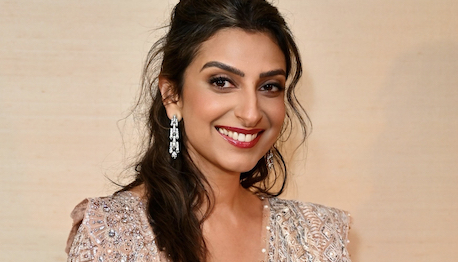 Divia Thani is global editorial director at Condé Nast Traveller
Divia Thani is global editorial director at Condé Nast Traveller
By Divia Thani
Back in 2001, when I moved back to India from the U.S., conversations regarding China and India were often likened to the hare and the tortoise story.
China was meant to signify the hare: speedy, fast-moving, racing to the finish line of economic development thanks to a determined and strategic autocratic government. India, meanwhile, the proverbial tortoise, was likely to plod along, slowly, in stops and starts, weighed down by a democracy with roots in socialism and a multi-party system that often resulted in indecisive coalitions.
Twenty-something years on, this fable seems just as relevant—perhaps what we are seeing now is the beginning of the end of the story, when the hare has tired out and stopped for a break, and the tortoise is, slowly, falteringly, making it through the home stretch.
Bright spot
India's GDP surpassed that of the U.K. last year for the first time and has captured the attention of the world for its growing middle class.
With global luxury brands having to reevaluate their businesses in China and Russia in the past few years amidst a landscape of a politically unstable Middle East and Europe teetering on the verge of a recession, India is a bright spot.
Brands are keen to win the hearts of the notoriously fragmented and fickle Indian consumer: and with Diwali, the Hindu New Year, coming up on November 1, they're going into overdrive. Jimmy Choo, Christian Louboutin and others have unveiled exclusive capsule collections.
Recognizing India's unique retail environment, where homegrown designers still reign, Tod's unveiled its collaboration of handbags and shoes with designer Rahul Mishra, and Mattel has released a Diwali Barbie dressed by Anita Dongre.
Diwali reaches luxury realm
Diwali marks the start of India's festive and wedding season, so gifting—especially watches and jewelry—is crucial to the mix.
For the third year, Conde Nast Traveller, for which I work as global editorial director, put together a Diwali ball for London's Indian diaspora. It's a night of music, dance, food, drink, red-carpet Indian looks and festivity.
This year, the British Fashion Council is also celebrating Diwali in London, along with smaller South Asian-owned brands in the beauty and fashion space.
In New York, several prominent names - from Prabal Gurung to Radhika Jones to Jay Shetty to Anjula Acharia - are hosting sponsored Diwali parties.
There is clearly a desire to celebrate Diwali in a manner that is bold and unapologetic in its fervor.
It's no coincidence that the embracing of desi culture amongst the diaspora has coincided with Indians having exploded into the mainstream across all industries, whether Leena Nair at Chanel, Sunder Pichai at Google, Sharan Pasricha of Ennismore or Priyanka Chopra in Hollywood.
What is exciting about these names, in particular, is that they were all born and raised in India and are finding major success on the world stage. There is a new-found confidence amongst our generation and less the feeling of having to 'fit in' to succeed internationally.
We can wear our culture on our sleeves proudly and celebrate it.
Year-round observance
Diwali is still far from being Chinese New Year in terms of the commercial opportunity it represents for international luxury brands, but for those that are willing to fold it into their long-term strategy for the Indian market, there is much to be gained.
The key is to keep up sustained efforts year-round, cater to Indian festivals aside from Diwali, and, most importantly, recognize that the Indian market has a long and deep history of appreciating and patronizing its own rich craft traditions.
Luxury in India is as much about service as it is product, so authentic collaborations with Indian artists and brands are essential, as is demonstrating true and unique value. It's only appropriate, after all, that the tortoise appreciates slow luxury.